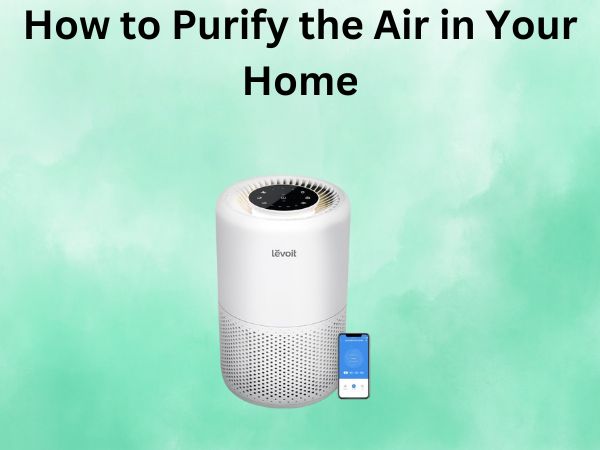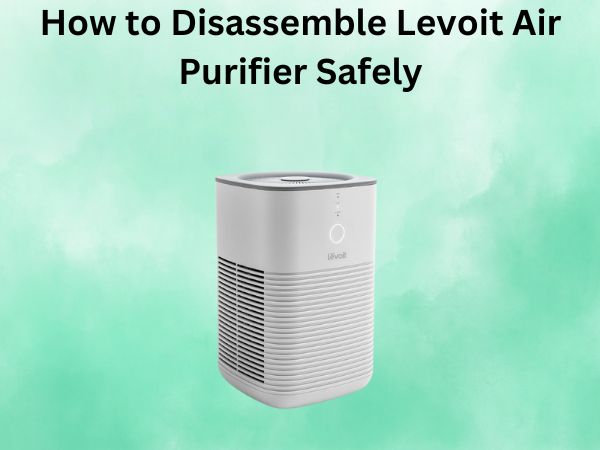How to Purify the Air in Your Home Naturally
Are you tired of breathing in stale, polluted air at home? Believe it or not, the air inside your house can be even more contaminated than the air outside. From dust and dander to volatile organic compounds (VOCs) and other airborne toxins, our living spaces are often breeding grounds for all kinds of unwanted particles and chemicals. But don’t despair—there are plenty of natural, eco-friendly ways to purify the air in your home and create a healthier, more breathable environment for you and your family.
Table of Contents
Understanding Indoor Air Pollution
Indoor air pollution is a serious issue that affects millions of people worldwide. According to the Environmental Protection Agency (EPA), the air inside our homes can be 2-5 times more polluted than the air outside. This is particularly concerning since the average person spends around 90% of their time indoors. Some of the most common indoor air pollutants include:
- Dust, dander, and other allergens
- Mold and mildew
- Volatile organic compounds (VOCs) from household cleaners, paints, and furniture
- Carbon monoxide and other gases from fuel-burning appliances
- Radon, a naturally occurring radioactive gas
Exposure to these pollutants can lead to a range of health issues, from respiratory problems and headaches to more serious conditions like cancer. That’s why it’s so important to take steps to improve the air quality in your home.
Natural Air Purification Methods
Fortunately, there are many natural and eco-friendly ways to purify the air in your home without relying on expensive, energy-guzzling air purifiers. Here are some of the most effective natural air purification methods:
1. Houseplants
Did you know that houseplants are natural air purifiers? They absorb carbon dioxide and release oxygen, helping to improve indoor air quality. Some of the best air-purifying plants include English ivy, peace lilies, snake plants, and spider plants. Strategically placing these green companions around your home can make a big difference in the air you breathe.
2. Essential Oils
Essential oils not only smell amazing, but they can also have powerful air-purifying properties. Certain oils, like lemon, eucalyptus, and tea tree oil, are known for their ability to eliminate airborne bacteria, fungi, and odors. You can use a diffuser to disperse the oils throughout your home or even make your own natural air fresheners.
3. Open Windows
One of the simplest and most effective ways to purify the air in your home is to open your windows regularly. This allows fresh, outdoor air to circulate and helps flush out stale, polluted air. Just be sure to do this on days with good air quality and avoid opening windows during peak pollution times or when pollen counts are high.
4. Beeswax Candles
Believe it or not, beeswax candles can also help purify the air in your home. As the candles burn, they release negative ions that attract and trap airborne pollutants, effectively cleaning the air. Plus, the warm, honey-like scent of beeswax candles can create a cozy, calming atmosphere in your living space.
5. Himalayan Salt Lamps
Himalayan salt lamps are another natural air purifier that can enhance the quality of the air in your home. These lamps emit negative ions that bind to and neutralize positive ions, such as those from dust, pollen, and smoke. The warm, soothing glow of a Himalayan salt lamp can also help create a relaxing, spa-like ambiance in your living space.
Combining Natural Air Purification Methods
For maximum effectiveness, it’s best to combine several of these natural air purification methods in your home. For example, you could place a variety of air-purifying houseplants around your living room, use a diffuser with calming essential oils in your bedroom, and keep Himalayan salt lamps lit in high-traffic areas. By taking a multi-faceted approach, you can create a healthier, cleaner indoor environment that’s free from harmful pollutants.
Conclusion
Purifying the air in your home naturally is not only better for the environment, but it can also have significant health benefits for you and your family. From houseplants to essential oils, there are many affordable, eco-friendly ways to improve the air quality in your living space. By incorporating these natural air purification methods into your daily routine, you can breathe easier, feel better, and enjoy a healthier, more sustainable home.
FAQs
How often should I open my windows to purify the air?
Experts recommend opening your windows for at least 15-30 minutes every day, or as often as possible when outdoor air quality is good. This helps flush out stale, polluted air and bring in fresh, clean air from outside.
Can essential oils actually kill airborne germs and bacteria?
Yes, many essential oils have potent antimicrobial properties that can effectively eliminate airborne bacteria, viruses, and fungi. Oils like tea tree, lemon, and eucalyptus are especially effective at purifying the air.
How do Himalayan salt lamps work to purify the air?
Himalayan salt lamps work by emitting negative ions that bind to and neutralize positive ions, such as those from dust, pollen, and smoke. This helps clean the air and can also create a calming, relaxing atmosphere in your living space.
What are the best air-purifying houseplants to have in my home?
Some of the most effective air-purifying houseplants include English ivy, peace lilies, snake plants, spider plants, and Boston ferns. These plants are known for their ability to absorb carbon dioxide, release oxygen, and filter out various airborne pollutants.
Can natural air purification methods completely eliminate indoor air pollution?
While natural air purification methods can significantly improve indoor air quality, they may not be able to completely eliminate all airborne pollutants, especially in homes with severe pollution issues. For the best results, it’s recommended to combine natural purification methods with other strategies, such as using high-quality HEPA air purifiers and regularly maintaining your home’s ventilation system.






